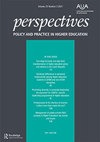Abstract:
This special issue of Perspectives brings together a curated set of articles on various aspects of human resource management (HRM), with a special emphasis on professional staff, that should inform good HRM in universities. There is a lot of discussion around ‘HR’ in universities – some good, some not so good. However, good strategic HRM, characterised by HRM aligned with strategic plans and HR Directors working together with the senior management team, can lead to effective policies, guidelines and practices for employee satisfaction and wellbeing. There has been a seismic shift in what HR do in the institution, from the old personnel function, to the human resource department, to the current people and culture iteration. These changes reflect the change to the HE sector, from a republic of scholars to a neo-liberal institution, or the corporate enterprise. Whatever your thoughts are on this, staff within our universities now operate in the world of budgetary constraint, and increasing pushes to increase productivity, efficiency and relevancy of activities. This may be ‘felt’more by the academic staff, but professional staff are not un-affected by this change as they are often at the forefront of these changes, from financial or student number reporting requirements, quality assurance, the various research excellence frameworks that operate internationally, diversification of income streams, and indeed changes to HRM practices to support the changing directions of the sector. This issue starts by exploring Quality of Working Life surveys used throughout the HE sector in the UK, human resource policies, and management practice common in HEIs. Sumayyah Qudah and her colleagues conclude that HRM practices are not fit-for-purpose in an HE context. They conclude with seven recommendations for improving employee satisfaction. They go on to suggest that staff needs and expectations should be further understood, and that organisational development strategies are paramount. The next article studied the importance of job titles for professional staff. Lindsay Melling undertook a qualitative study interviewing professional staff in the UK, exploring topics including the participants’ jobs/job titles and whether these were considered accurate by the job holders. She makes a number of recommendations for the organisation in terms of job titles, as these were found to be important for staff. We move on to thinking about how we prepare new staff for leadership roles in professional services. Peggy Holzweiss and colleagues emailed student affairs staff in the US to complete a qualitative questionnaire with open-ended questions around this issue. They found five distinct themes that staff thought new professionals should be trained in. They also found that these themes aligned with the AUA’s CPD framework and suggested that this framework should be incorporated into professional practice. Ruth Coomber continues a discussion around professional development by studying how professional staff perceive and engage with it. She used a multimethod questionnaire to survey staff in two UK universities who hold the AUA Mark of Excellence. The study found two career enablers – professional development opportunities and supervisor discussions, and six career barriers – including financial support, workload, and so on. One aspect of professional development that is becoming more common for professional staff is that of the professional doctorate (or PhD). Joanne Caldwell reflects on her experience of her first two years of a professional doctorate and concludes that self-reflection and critical thinking have become invaluable as a way to understand her own professional practice. A lesson for all of us who participate in professional development. Building on the seminal work of Celia Whitchurch, Natalia Veles and colleagues discuss their conceptual model of professional staff as third space professionals working across boundaries of culture, integration between professions and levels of engagement. These complex interactions are, they argue, critical for the functioning of the twenty-first century university as a way to enhance alternative revenue streams, to provide opportunities for student global engagement and to increase partnerships and collaborations between institutions globally. The next paper outlines the results of an evaluation study on the use of a blended learning approach for disability training from a university in Spain. Anabel Moriña concludes that a well-planned, structured and systematic approach ensuring active engagement is critical. The goal of the programme, well-informed staff, is then met as participants felt more comfortable working with students with disabilities. They also conclude that the training should be compulsory not voluntary, a conclusion that reflects the norm of compulsory diversity training in place in most UK and Australian universities. Oliver Cooper’s paper discusses progression barriers for female students and academics in UK HE. He discusses some of the theoretical arguments for barriers to progression and concludes from his study that the main causes of the lack of progression of female academics can be turned around by increases in part-time working, increased talent management and career support, and that the sector should address its patriarchal nature. This of course holds true for professional staff as well. The penultimate paper considers if academic managers can learn lessons from elite sports coaches for improving the motivation, and performance management















